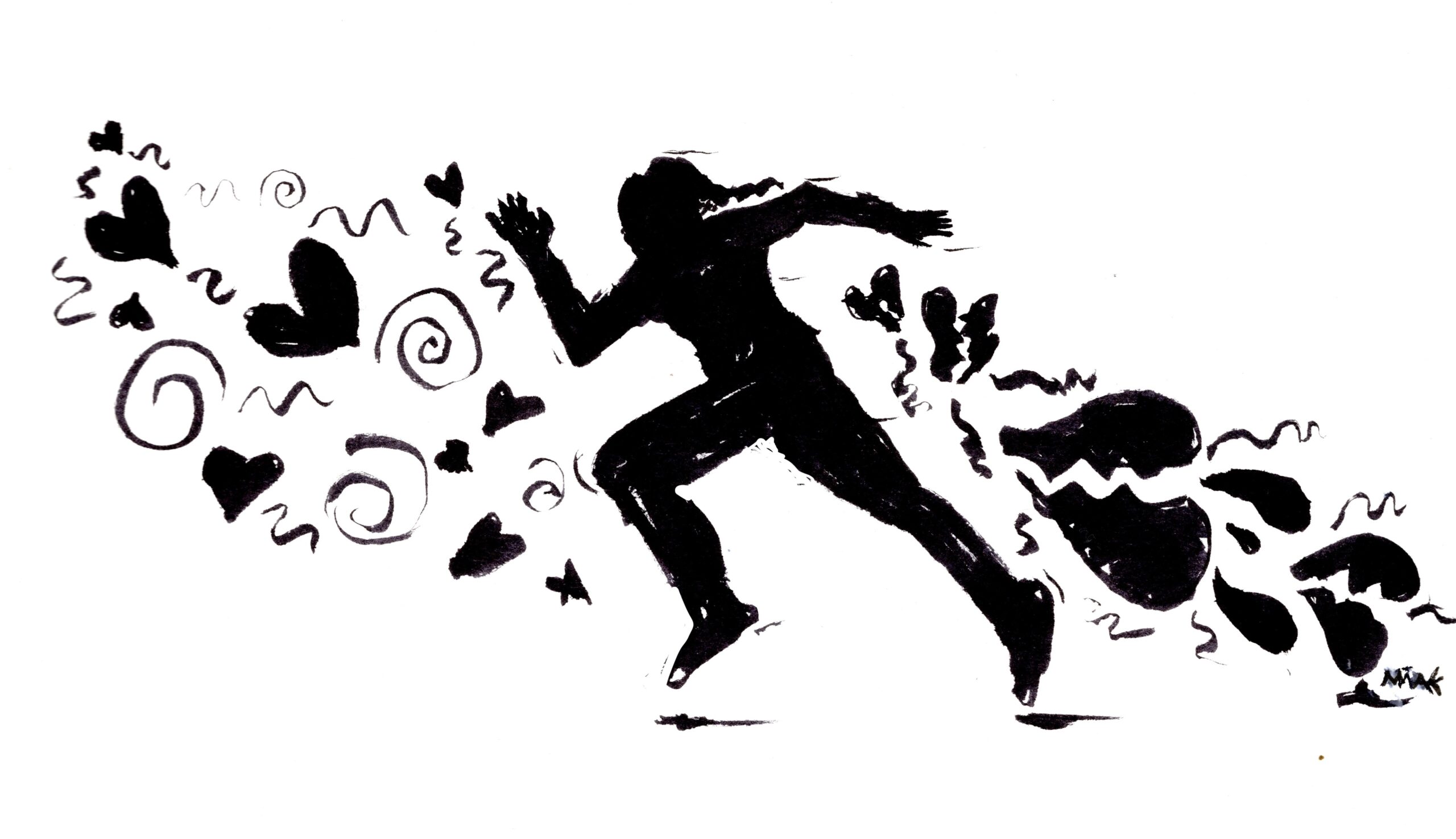The breakup to running pipeline: why we trade heartbreak for heart rates
The News talked to researchers to reveal why heartbreak often leads to physical exercise.

Mia Kohn
After a breakup, many people swap emotional heartache for heart rate monitors, trading tears for triumphs in running shoes, yoga mats or the gym. But why does emotional pain so often lead to physical gain?
From neurobiological mechanisms to psychological resilience, several factors contribute to this inclination toward healthier habits when faced with emotional challenges. Physical activity seems to offer more than just physical benefits — it provides a mental and emotional outlet, allowing individuals to navigate their distress more constructively.
“People can respond to stressful or potentially traumatic events in different ways. This can be a time when people are vulnerable to unhealthy patterns, but it’s also a time when individuals adopt behaviors that help them cope in more positive ways,” Dr. Marc Potenza, a Yale psychiatrist specializing in stress and impulse control, told the News.
According to Potenza, the shift to healthy habits isn’t only about physical well-being, it’s also about regaining agency.
In the aftermath of an emotionally difficult event, many find their lives thrown off balance. This loss of stability can leave people feeling powerless. When life feels overwhelming, people may seek ways to channel their energy into something positive and purposeful.
Physical activity provides a structured way to regain a sense of control and normalcy. With each new fitness goal, one creates small victories that help them regain control over their day-to-day routines.
According to Dr. Kathlene Tracy, a specialist in emotional regulation at Yale Health, exercise can be effective during emotional upheaval because it can help regulate emotions. Emotional pain can be all-consuming, causing people to ruminate and lose focus on anything but their distress. Physical activity forces the brain to focus on the present — whether it’s maintaining balance while running or regulating breathing during a workout. This present-mindedness provides an immediate break from emotional turbulence.
Beyond the mental benefits, exercise triggers physiological changes that make us feel better. Endorphins, often dubbed the “feel-good” chemicals, are released during physical activity, boosting mood and creating a sense of euphoria, Tracy added. These effects are why many people experience what’s known as a “runner’s high.” For someone navigating emotional pain, these uplifting moments can serve as a much-needed relief from the intensity of their feelings.
“Physical activity is one of the most effective ways to improve mood. It also plays an important role in regulating sleep, which is highly important for maintaining good mental health,” says Dr. Paul Hoffman, chief of mental health and counseling at Yale Health.
But it’s not just the physiological boost that keeps people running or heading back to the gym. Social influence plays a significant role, especially in the age of fitness tracking platforms and in-person group fitness classes.
When someone shares their progress or completes a marathon, they receive validation from peers, creating a feedback loop that motivates them to keep going, according to Potenza. The act of broadcasting their fitness journey can turn an emotional struggle into a shared social experience.
This sense of community can be particularly healing after a breakup or other emotionally challenging events, said Hoffman. Exercise not only gives individuals a personal sense of accomplishment but also offers the potential to connect with others who might be navigating similar emotional landscapes. The camaraderie found in fitness groups or even virtual platforms helps break the isolation that often accompanies emotional distress.
“Physical activity can increase self-esteem and improve emotional regulation through the release of endorphins and by enhancing brain function in areas like decision-making,” Tracy said.
According to Tracy, it’s not just about feeling good in the short term — adopting healthy habits during emotionally difficult times can have long-lasting effects. Many people who turn to exercise as a way of coping with distress find themselves sticking with it long after the initial turmoil has passed.
But the shift toward exercise, though powerful, isn’t a universal response to emotional pain. Not everyone reacts to breakups or setbacks by hitting the gym. For some, art, meditation or therapy provide the emotional support they need. The choice often depends on individual differences, cultural backgrounds and the nature of the emotional distress experienced, Potenza noted.
“Even healthy behaviors, like exercise, can become maladaptive if they are used as a way to avoid processing emotion,” Potenza said. “It’s important to pair healthy habits with emotional support systems, such as counseling or mindfulness practices.”
Yale Club Running meets every weekday on Cross Campus.







